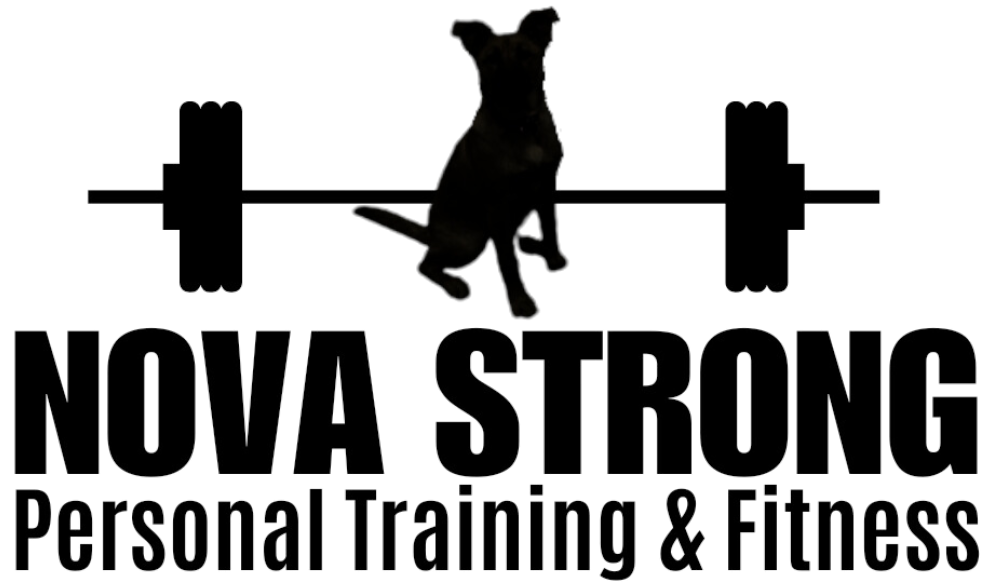10 Core Exercises You Need to Try
When people think about having a strong core, what often comes to mind is a chiseled six pack. What most people don’t realize is that when we talk about having a strong core, there’s far more involved than just the rectus abdominus (the six pack muscles) and the reality is that even though the rectus abdominus is a part of the core musculature, it’s just a small fraction of it. Someone could even have a six pack but actually have a relatively weak core.
Having a six pack is in large part dictated by body fat percentage, not actual strength.
In actuality, the core encompasses several muscles to include the diaphragm, transverse abdominis, erector spinae, and multifidus (to name a few) which work together to support and protect your spine, pelvis and hips through various ranges of motion throughout the day.
Another thing that probably comes to mind when you think about building a strong core? Crunches. And let’s be honest here. No one likes doing crunches. I don’t even like doing crunches.
The fact of the matter is that if you hate crunches and you’d prefer to do something else, that’s a-okay since crunches are just one of an almost infinite number of ways to challenge your core. Other ways to challenge it are to move our body in different planes of motion, challenging our muscles to engage in spinal flexion, extension, and rotation, or as you’ll see, challenging them to resist these movements…. So it ends up being a bit more complicated than just doing crunches, but don’t fear because I’m going to break it down for you.
How to Spot a Good Core Exercise
Before we get into this further, we need to establish what core training is. To put it simply, your core includes the musculature that connects the upper and lower body and supports your spine. A good core training program should include movements that challenge anti-extension, rotary stability, and anti-flexion. What do all these fancy words mean? Extension, flexion, and rotation in this case are referring to the spine, with extension referring to an arched spine, flexion referring to a rounded spine, and rotation referring to a twisting motion of the spine. Anti-flexion/extension simply means that these movements require your body to resist flexion or extension (this will make more sense later on when you see some examples).
More than just Aesthetics
It’s important to remember that strengthening your core musculature is important for far more reasons than just an aesthetic perspective.
We utilize our core strength and stability every day whether it be just generally stabilizing our core to support our spine, hips and pelvis, to dynamic movements such as reaching overhead, twisting your body to move something, bending over, etc. to more intense sports-related movements such as swinging a baseball bat, completing a gymnastics pass, etc.
We may not even realize how much we rely on our core stability in our day-to-day life, but if you think about basically any action or movement that you do day-to-day, there’s a 100% chance that you’re using your core. This is why it’s important that we maintain a trunk that can move through a variety of motions and withstand the forces needed to maintain spinal health and performance throughout our lives.
For today’s article, we’re going to focus on core exercises that resist motion as that’s where I put more emphasis when I start with a client since it seems to have faster carryover to other things. Below, I’ve listed some of my favorite core exercises in anti-extension, anti-rotation, and anti-lateral flexion that I like to use. They are listed from hardest to easiest, so pick your poison when trying them out!
Anti-Extension
As we discussed earlier, anti-extension refers to resisting the extension of the spine. Developing strength here is especially important for individuals who may have extension-based back pain or poor ability in maintaining their rib position in their squat. Let’s take a look at some of my favorite anti-extension exercises.
The Body Saw
The body saw is a simple movement that we love to use as a progression once clients have mastered the plank. To do this movement you’ll want to get in a plank position on your elbows, and slowly rock your body forward by pushing off your toes, then backward. Similar to a normal plank, you’re going to have to resist arching your back down towards the floor while making sure that you aren’t driving your butt up in the air. Imagine pretending that you have a board connecting your shoulders to your feet, which you cannot bend. Shifting further forward and backward will make this movement harder, while also demanding more shoulder involvement. Smaller shifts will make this easier.
TRX Fallout
You’ll need: a TRX trainer or suspension trainer
The TRX fallout is one of my personal favorites as it challenges anti-extension while also requiring you to stabilize your upper body due to the nature of the straps. Similar to the plank, you’ll want to ensure that you don’t allow your back to arch. Ensure that you brace your core, while also using your chest and shoulders to stabilize the straps and keep them from shifting out of place. Standing in a more vertical position will make this movement easier, whereas standing at more of an angle will make this movement harder. This movement can also be performed from a kneeling position.
Deadbug
The deadbug exercise doubles as a core movement as well as a movement that challenges your coordination. For this movement you’ll want to imagine trying to push your belly button towards the floor. If someone were to take their hand and try and put it underneath your back while doing this exercise, you would want to make sure that you weren’t arching such that they could pass their hand through. As one leg goes back, the opposite arm will also go back (which is where the coordination comes into play). You’ll want to shoot your leg out straight such that it just hovers above the floor without allowing it to touch.
Rotary stability
These movements will challenge your ability to maintain and control your spine and pelvis while rotating your body in different directions. This is incredibly important for many athletes but is also still necessary even if you don’t compete in anything.
Landmine Rainbows
You’ll need: a barbell and a corner of the wall to wedge the end, or a landmine tool like the one shown in the video.
These are more challenging than they look so I would consider this an advanced movement given that it requires a good deal of upper body chest and shoulder strength in addition to core strength. Extend the arms, keep a slight bend in the knee and slowly lower the barbell to either side of the hips. Standing will be easier than a kneeling position in this case. If this movement is too difficult and you’d like to work up to it, begin by working on learning a two-handed press to strengthen your upper body, and go from there.
Standing Pallof Press
You’ll need: a band and a structure to affix it to. If you’re doing this movement at home, you can tie a knot at the end of your resistance band, then wedge the end into a closed door as an anchor point.
Variations of the Pallof press are a fan favorite amongst Personal Trainers and for good reason. This movement is easy to learn and a great place for beginners to start. Focus on keeping your core tight and facing straight ahead. You’ll want to stretch the cable far enough away from its fixed point such that you have to resist rotating your body towards it. You can make this movement harder by incorporating a five second hold when your elbows are in the fully extended position, or completing it from different positions such as kneeling, half-kneel, etc.
Plank Shoulder Taps
If you’ve mastered the plank, this is a great movement for you to try. Focus on resisting rocking your body back and forth as you tap either shoulder. You can monitor this by placing a small object on your back such as a phone or a wallet and avoid tipping it off. Similar to a plank you’ll want to avoid arching your back or pitching your butt into the air. This movement will challenge your shoulders as well as your core, and it’s worth noting that stretching your wrists before this movement may be helpful in preventing any wrist discomfort.
Anti-Lateral Flexion
Lateral flexion is essentially a side-bend, so anti-lateral flexion movements require you to resist side bending or essentially be able to resist something heavy pulling you down to one side as you hold it in your hand. Which is why one of my go-to starting points for this part of the core is just that:
The Suitcase Carry
You’ll need: a kettlebell, dumbbell or some other moderately heavy household object that you can hold in one hand while walking.
The suitcase carry is one of my personal favorite movements to do with my clients because it carries over to so many activities that we do day-to-day. The suitcase carry is similar to the Farmer’s carry, with the difference being that during a Farmer’s carry you will hold two weights of equal weight, whereas in the Suitcase carry you only hold one weight. This forces you to stabilize your core since holding a heavy weight in just one hand pulls your body towards that side, and forces you to resist that pull in order to stay upright. I mentioned that this movement carries over incredibly well into daily life activities, and the name even further proves this point as it simulates carrying a suitcase with one hand.
Fireman’s Carry with Sandbag
You’ll need: a sandbag or a moderately heavy but soft household object that can rest comfortably on your shoulder. If you have a small child, you can even use them and create a fun exercise for both of you.
Keep your shoulders back, chest up, and resist leaning in the direction of the side that the sandbag is placed on. Similar to the suitcase carry, having a weight on only one side of your body will force you to resist leaning your body towards that side.
Standing Overhead Pallof Press
You’ll need: a band and a structure to affix it to
Given how popular the Pallof press is among Personal Trainers, you shouldn’t be surprised that another variation is making the list. Slowly raise your arms from a position at shoulder height to eye level, then back down. Keep a slight bend in the knees and resist twisting your core towards the band. You should have enough tension on the band and be far enough away from the affixed site such that you have to stabilize your core to avoid twisting back towards the band.
Bonus All Around:
I’m going to leave you with one bonus exercise that pretty much challenges everything that we’ve talked about so far.
The renegade row
You’ll need: non-circular dumbbells
Choose a light set of dumbbells when starting this exercise as it is deceivingly difficult. You’ll need to choose dumbbells that are hexagon shaped on the ends rather than rounded as the rounded ones will roll when you try to use them. Keep a tight core and don’t allow your core to sink down or pitch up in the air. Drive your elbow back and up such that the dumbbell meets a point around your hip, then slowly lower back down while maintaining proper core form.
Try adding a few of these movements into your next exercise routine and see what you think! Be careful to progress them slowly though, as many of them are harder than they look.


